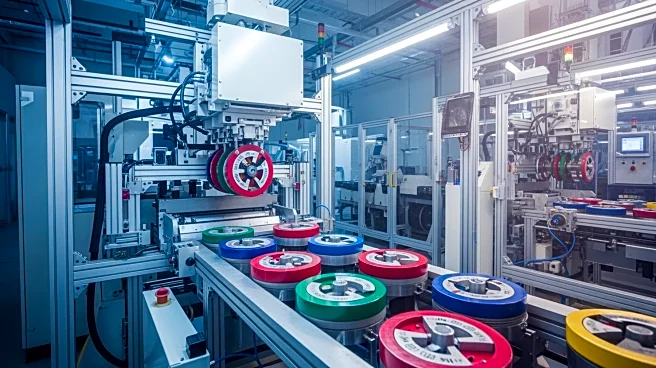What's Happening?
Cyclic Materials, a Toronto-based metals recycling company, has expanded its partnership with Vacuumschmelze (Vac), a manufacturer of magnets used in various industries, including automotive and renewable
energy. Under a new 10-year agreement, Cyclic Materials will recycle all magnet production byproducts from Vac's upcoming facility in Sumter, South Carolina. This agreement builds on their existing partnership established in 2024, allowing Vac to reintegrate recycled mixed rare earth oxides into its production processes. Cyclic Materials is preparing to open its first U.S.-based recycling facility in Mesa, Arizona, in 2026, as part of its strategy to grow North American partnerships. The company aims to boost domestic supply chains for critical minerals used in electronics, batteries, and magnets, addressing the current market dominance by other countries.
Why It's Important?
The expansion of Cyclic Materials' partnership with Vacuumschmelze is significant for the U.S. manufacturing and recycling industries, as it supports efforts to establish a domestic supply chain for critical minerals. This initiative aligns with federal priorities to reduce reliance on foreign sources for essential materials used in technology and renewable energy applications. By recycling rare earth elements, Cyclic Materials contributes to environmental sustainability and reduces the carbon footprint associated with mining raw materials. The partnership also highlights the growing importance of recycling in achieving net-zero production goals, particularly in industries like automobile manufacturing. The collaboration with Vacuumschmelze, backed by funding from major corporations, underscores the potential for innovation and growth in the recycling sector.
Beyond the Headlines
The partnership between Cyclic Materials and Vacuumschmelze reflects broader trends in the recycling industry, where companies are increasingly focusing on sustainable practices and circular economy principles. The use of recycled materials in manufacturing processes not only reduces environmental impact but also enhances resource efficiency. This development may encourage other companies to adopt similar practices, promoting a shift towards more sustainable production methods. Additionally, the collaboration could lead to advancements in recycling technologies, further improving the efficiency and effectiveness of material recovery processes.














